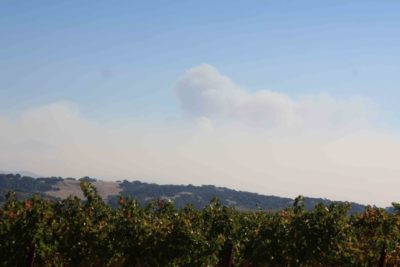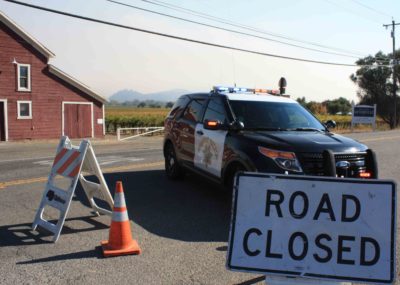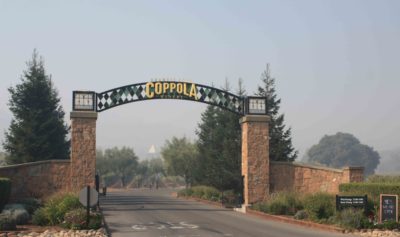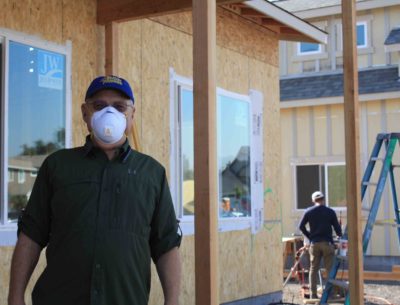
Once again, the skies above California are filled with the smoke from myriad wildfires. And Cal/OSHA rules have come into play. It seems now October is the cruelest month. At this writing, there were at least 15 active wildfires throughout the state, according to CalFire, with the biggest in Sonoma County. Two large Los Angeles-area blazes, the Saddle Ridge and Tick fires, together covered more than 13,000 acres, but were largely contained early in the week. The Getty fire also was a major Los Angeles-area blaze.
Containment was much slower for the Kincade fire, which started near a geothermal power plant at Geyserville, in northern Sonoma County, and had consumed more than 76,000 acres by midweek, several orders of magnitude larger than the other statewide fires. As of this writing it is only 30% contained, but firefighters were increasingly encouraged by their progress. But the fire won’t be fully controlled until the end of the first week in November.
Historically ferocious winds fanned the flames and about 200,000 county residents, including the Cal-OSHA Reporter editor, were evacuated as fire officials feared the offshore winds could jump the flames west across U.S. 101 and ignite tinder-dry parts of the county that haven’t burned in well over a generation. About 40% of the county’s population was evacuated, with many housed in makeshift shelters. All the county’s schools were closed, and countless businesses were disrupted.

The winds were expected to die down early in the week, then pick up midweek. The silver lining to the east-to-west winds was that the thick smoke from the mountains was blowing largely out to sea. But the smoke was still detectable 77 miles south of the fire in San Francisco. And a change of wind could recreate the conditions that led to Cal/OSHA’s emergency regulation to protect outdoor workers from wildfire smoke.
Time to Mask Up?
Just a day before the power went out in Sonoma County and a third of its residents were given evacuation orders, Cal-OSHA Reporter traveled to the Geyserville area to get a sense of whether outdoor workers were aware of the new Cal/OSHA regulation General Industry Safety Orders §5141.1.
The air in the southern part of the county was a fog-like haze, highly reminiscent of the conditions from the past two years from the destructive Tubbs and Camp fires. As we traveled north from Santa Rosa, it got even worse. Smoke billowed out from The Geysers, the mountainous area east of the freeway, moving south with the fire.

Just west of the freeway across from the fire line, the Francis Ford Coppola Winery was open for business, and surprisingly because of the thick haze surrounding the winery, tourists were tasting wine and visiting the famous movie director’s memorabilia exhibits.
One employee told us she and her fellow workers are “generally aware” of the emergency regulation.
Coppola’s harvest is about half done – the whites are picked first, then the reds. But in our travels throughout the north part of the county, we so no field hands working the vineyards. Keeping workers inside is a preferred way of preventing exposure to wildfire smoke.
Another employee in the tasting room had a respirator around his neck, having taken it off to talk to someone. Did he have a respirator because he needed to work outside? “I’m wearing it because I’m inside,” he replied. “I can smell the smoke in here.”
Outside the winery, we saw two workers pull into an open shed in an all-terrain vehicle, one wearing a respirator, the other not.

The emergency regulation requires that employers make respirators available when the Air Quality Index reaches 151. The air almost certainly met or exceeded that level that day, but the Airnow.gov website cited as a reference in the Cal/OSHA regulation deemed the Santa Rosa-area air “moderate” for that day. Employees working in the area knew better.
We also drove through Coffey Park, the Santa Rosa neighborhood that was devastated in the 2017 Tubbs fire, but is now largely rebuilt. At one house under construction, we encountered a design consultant who identified himself only as “Earl,” helping supervise the project. He was masked up. “When you can’t see more than a quarter mile, it’s time to put on a respirator,” he told us.
Earl also said he was aware of the wildfire smoke emergency regulation, and he and other supervisors on the project told workers that respirators were available. He added that if work was going to continue that day until late afternoon, they would recommend the construction workers don their masks.
Respirators are required when the AQI hits 500, a level that is off the charts. At that point, employers must fit-test employees and follow the other requirements of GISO §5144, the respiratory protection standard. For purposes of the emergency standard, Cal/OSHA did not want to wade into the regulatory minefield of requiring fit-testing and medical evaluation in these situations. Employers made their opposition loud and clear.
Regulatory Requirements
The emergency regulation requires employers to monitor the AQI for particulate matter 2.5 when wildfire smoke affects a worksite and take these steps when the AQI for PM2.5 is at least 151 and the employer “should reasonably anticipate” that employees may be exposed to wildfire smoke:
- Inform employees of the AQI and the protective measures available;
- Train workers on the information in §5141.1 Appendix B;
- Reduce exposure by providing enclosed structures or vehicles where the air is filtered, make changes to work schedules or procedures (such as changing work locations or limiting the amount of time employees work outdoors); and
- Provide compliant respiratory protection for voluntary use. Respirators must be NIOSH-labeled as N-95, N-99, N-100, R-95, P-95 or P-100.
If the AQI exceeds 500, respirator use is mandatory. In such cases, the §5144 requirements kick in and the employer must have a written respiratory protection program. Employees must be medically evaluated to wear a respirator, fit-tested for tight-fitting respirators, trained. The program also must have procedures for selecting the proper respirators.
In our tour of smoked-out Sonoma County, we saw many workers going without masks, but Cal/OSHA cautions that the long term effects of exposure could be serious. “Smoke from wildfires contains chemicals, gases and fine particles that can harm health,” the agency says. PM2.5 can reduce lung function, worsen asthma and heart and lung conditions.
We’re not out of the woods and, unfortunately, the woods are on fire.

